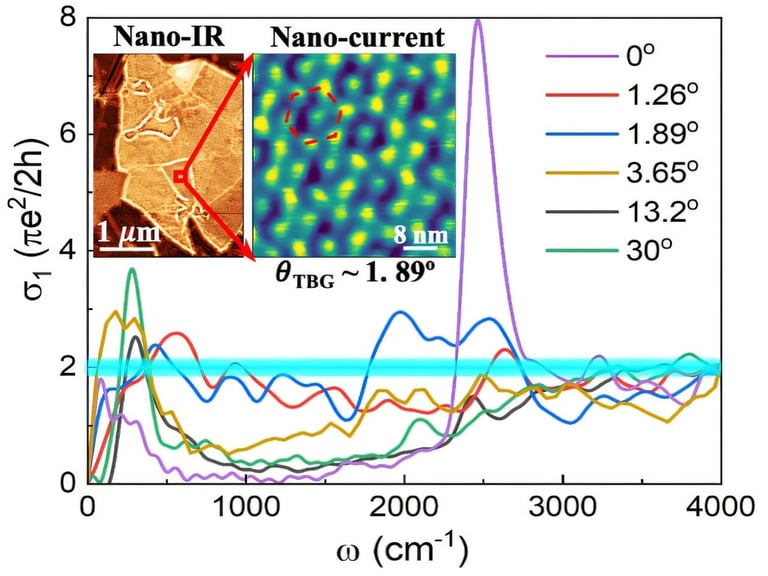Breakthrough in Graphene Research: Twisted Bilayer Reveals Consistent Optical Conductivity
November 7, 2024
The research received support from the U.S. Department of Energy's Basic Energy Sciences and the National Science Foundation's Division of Materials Research, with contributions from institutions in China.
The study was led by Assistant Professor Guangxin Ni, alongside Assistant Professor Cyprian Lewandowski and graduate research assistant Ty Wilson.
Researchers from Florida State University and the National High Magnetic Field Laboratory have published findings in the journal Nano Letters, detailing how physical manipulations of graphene, such as layering and twisting, affect its optical properties and conductivity.
These findings highlight the promise of multilayer moiré systems for developing materials with customizable optical properties, which could lead to advancements in moiré optoelectronics, impacting technologies such as thermal imaging and optical switching in processors.
Using a scanning near-field optical microscope, the team captured images of plasmons—tiny waves of energy resulting from organized electron movement—across the twisted bilayer graphene.
The study specifically aimed to explore the optical properties of twisted bilayer graphene, focusing on different twisting angles that had not been extensively compared in previous research.
Graphene, a remarkable nanomaterial made of a single layer of carbon atoms, is known for its exceptional strength and conductivity, making it valuable for various technologies.
The team discovered that the optical conductivity of twisted bilayer graphene remains consistent across twist angles of less than two degrees, indicating that its properties are primarily influenced by the super-moire structure rather than chemical doping or twist angle.
This research emphasizes the importance of geometric relaxations in double-moire lattices, which will inform future studies on nanomaterials and their applications.
The findings suggest that the optical properties of the super-moire material depend more on its geometric structure than on external factors, allowing for improved optical conductivity.
The researchers analyzed grain boundaries in the images to identify how different regions of twisted bilayer graphene interacted with a layer of hexagonal boron nitride beneath it, creating a 'double-moire' structure.
The measurement technique employed allows for detailed probing of local optical responses in two-dimensional systems, enhancing the understanding of graphene's behavior under various conditions.
Summary based on 4 sources
Get a daily email with more Science stories
Sources

Phys.org • Nov 7, 2024
Physicists reveal how layers and twists impact graphene's optical conductivity
ScienceDaily • Nov 7, 2024
Physics with a twist: New findings on graphene
Mirage News • Nov 7, 2024
FSU Researchers Unveil New Graphene Discoveries
Florida State University News • Nov 7, 2024
Physics with a twist: FSU researchers publish new findings on graphene